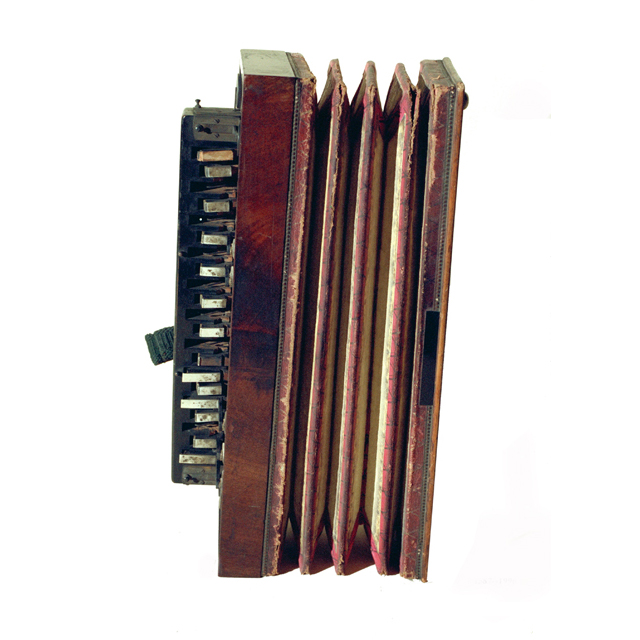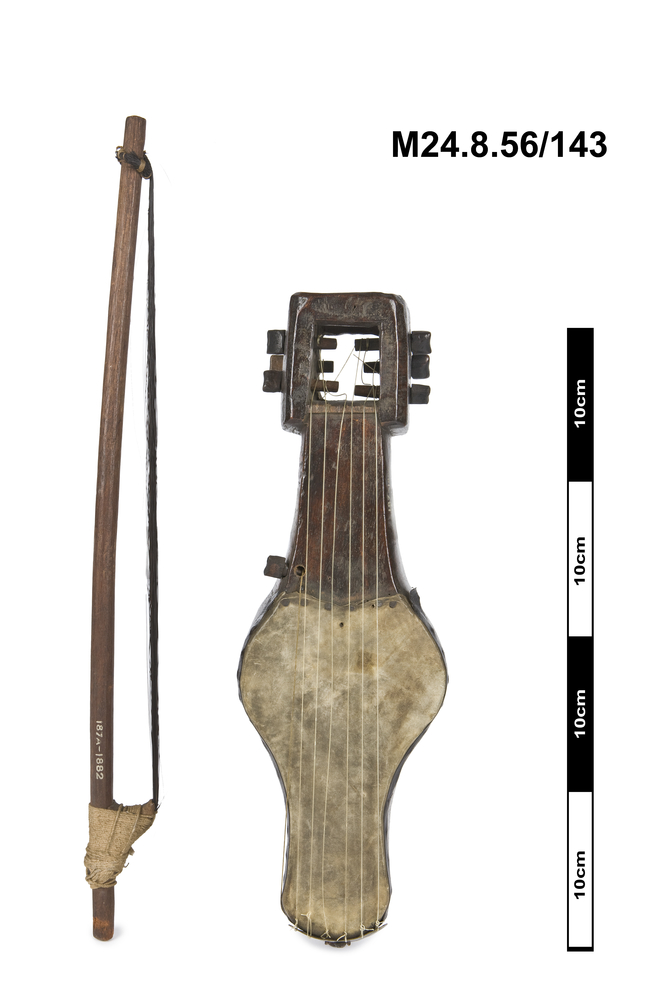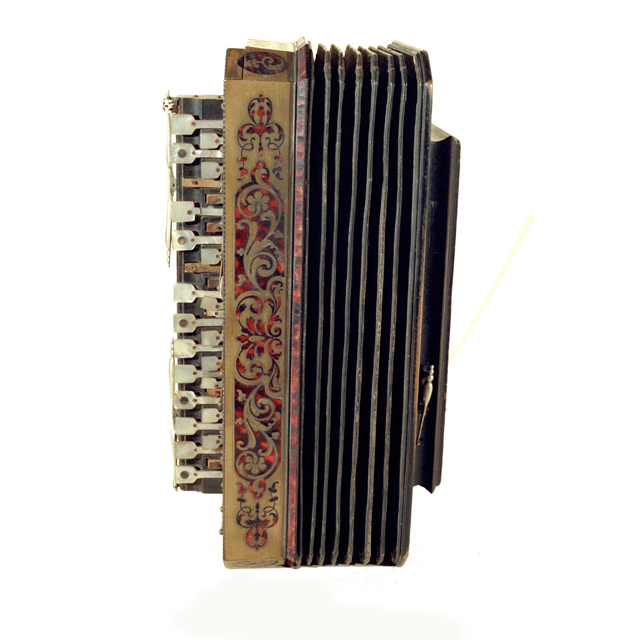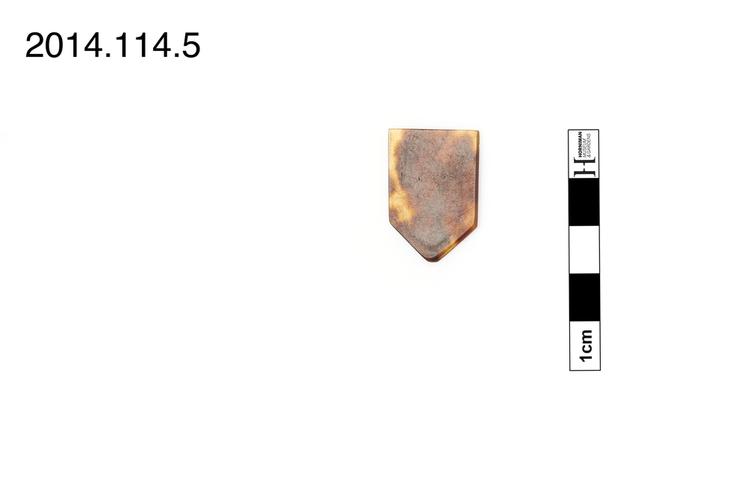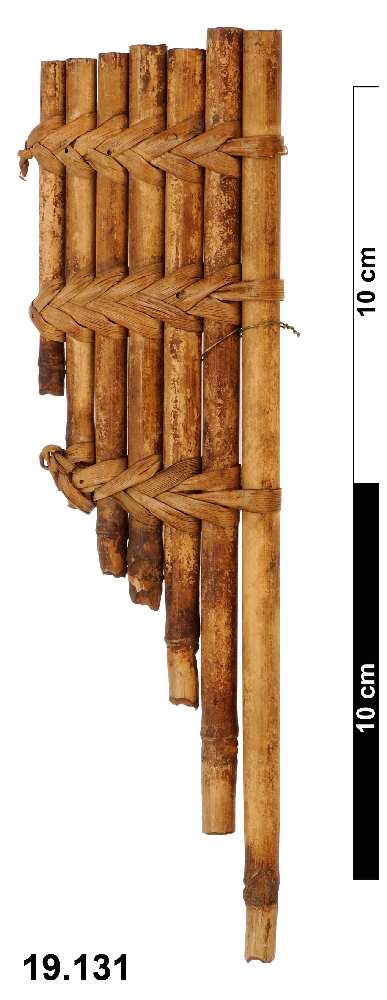
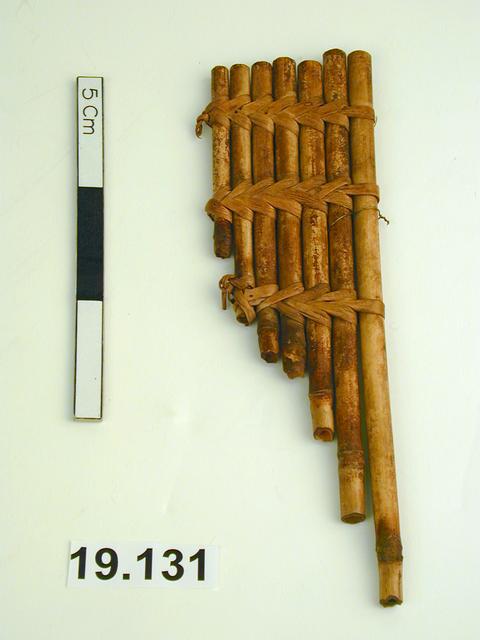
Set of seven bamboo panpipes that are open at the proximal end and closed by nodes at the distal end. The pipes are bound together at three levels with a chevron weaving of pandanus leaf strips.
Panpipes, Maewo island, Vanuatu, Eastern Melanesia. Bamboo was used on the island of Maewo to manufacture a number of musical instruments, including xylophones, ‘Aeolian’ (i.e. wind-blown) noise-makers, single-tube flutes with finger holes, and panpipes such as these. Two basic types of panpipe were made in Vanuatu: First, those which are termed ‘open’, where the bamboo pipes themselves were cut open at the bottom, and half open at the top; these instruments were played by blowing from a short distance above the pipes. These were restricted to a small area covering northern Santo and Malakula islands. Second, ‘stopped’ panpipes like our set here were completely sealed below and fully open above, being blown directly across the top. This example from Maewo island was manufactured as follows. The longest pipe was always the first to be cut, carefully trimmed down at the mouth end until it held a natural note. This became the ‘keynote pipe’, and the shorter, higher pipes were cut, one by one, to harmonise with it. In this way, there was no standardised range of notes, such as we are used to in the West; each instrument was essentially unique. Bamboo. Early 20th Century. Formerly in the private collection of Sir Everard Im Thurn.



